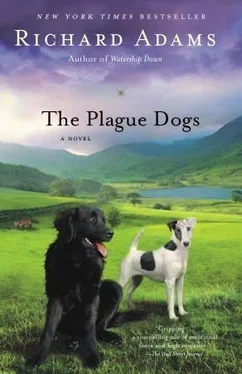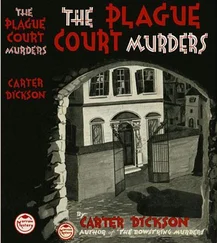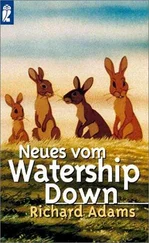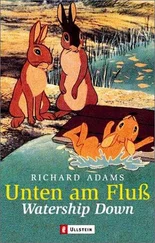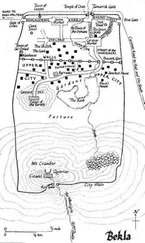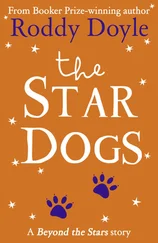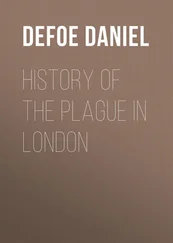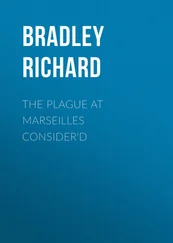Richard Adams - The Plague Dogs
Здесь есть возможность читать онлайн «Richard Adams - The Plague Dogs» весь текст электронной книги совершенно бесплатно (целиком полную версию без сокращений). В некоторых случаях можно слушать аудио, скачать через торрент в формате fb2 и присутствует краткое содержание. Город: New York, Год выпуска: 2007, ISBN: 2007, Издательство: Ballantine Books, Жанр: Природа и животные, Фэнтези, на английском языке. Описание произведения, (предисловие) а так же отзывы посетителей доступны на портале библиотеки ЛибКат.
- Название:The Plague Dogs
- Автор:
- Издательство:Ballantine Books
- Жанр:
- Год:2007
- Город:New York
- ISBN:978-0-345-49402-3
- Рейтинг книги:3 / 5. Голосов: 1
-
Избранное:Добавить в избранное
- Отзывы:
-
Ваша оценка:
- 60
- 1
- 2
- 3
- 4
- 5
The Plague Dogs: краткое содержание, описание и аннотация
Предлагаем к чтению аннотацию, описание, краткое содержание или предисловие (зависит от того, что написал сам автор книги «The Plague Dogs»). Если вы не нашли необходимую информацию о книге — напишите в комментариях, мы постараемся отыскать её.
, Richard Adams creates a lyrical and engrossing tale, a remarkable journey into the hearts and minds of two canine heroes, Snitter and Rowf, fugitives from the horrors of an animal research center who escape into the isolation—and terror—of the wilderness.
The Plague Dogs — читать онлайн бесплатно полную книгу (весь текст) целиком
Ниже представлен текст книги, разбитый по страницам. Система сохранения места последней прочитанной страницы, позволяет с удобством читать онлайн бесплатно книгу «The Plague Dogs», без необходимости каждый раз заново искать на чём Вы остановились. Поставьте закладку, и сможете в любой момент перейти на страницу, на которой закончили чтение.
Интервал:
Закладка:
It was generally agreed that these blended very well into their surroundings—the open hillside and oak copses, the darker patches of pine and larch, the dry stone walls, small green fields and knife-bright, cloud-reflecting lake below. Sir Conham had retained the old farmhouse and outbuildings, converting them into a luncheon room, common room and offices for the resident staff. Local stone and slate had been used to face and roof the laboratories, the Christiaan Barnard surgical wing and the stables, while for the livestock block Lord Plynlimmon, the well-known photographer and aviary expert, had been co-opted to design a single, large building, comprising under one roof more than twenty various sheds and rooms equipped with cages. The establishment had been opened on midsummer day, in pouring Lakeland rain, by Baroness Hilary Blunt, the former all-time high in Permanent Secretaries, and the flow of letters to The Times had trickled, faltered and finally ceased.
“And now,” said the newly appointed Director to Dr. Boycott, as the first consignments of dogs, guinea-pigs, rats and rabbits came rolling up the smooth, steeply gradiented tarmac in the station’s three distinctively painted blue vans, “now let’s hope we’ll be left in peace to get on with some useful work. There’s been a lot too much emotion spent on this place so far, and not enough scientific detachment.”
The black mongrel, its coat almost dried, the muzzle removed and a flexible rubber oxygen pipe fixed close to its half-open mouth, was lying on a pile of straw in one corner of a wire pen at the far end of the canine shed. A label on the pen door bore the same number—732—as that stamped on the dog’s green plastic collar, while below this was typed: SURVIVAL EXPECTATION CONDITIONING: (WATER IMMERSION): DR. J. R. BOYCOTT.
The shed comprised, in all, forty pens, arranged in two double rows. Most of these contained dogs, though one or two were empty. With the majority of the pens, all four sides consisted of stout wire netting, so that for the occupants of these there were three party walls and three canine neighbours, except where an adjacent cage happened to be empty. The pen of seven-three-two, however, being at the end of Row 4 and also at the end of the block, had one brick wall, which was, in fact, part of the periphery wall of the building itself. Since the adjacent pen in Row 4 happened to be empty, seven-three-two had only one neighbour—the dog in the back-to-back cage in Row 3, also situated against the brick wall. This dog was not at the moment to be seen, and was evidently in its kennel (for each pen contained a kennel), though there were signs of occupation—a well-gnawed rubber ball in one corner, a yellowing blade-bone with no meat remaining on it, several fresh scratches along the brickwork, some ordure, a half-empty water-bowl and, of course, a label on the door: 815. BRAIN SURGERY, GROUP D. MR. S. W. C. FORTESCUE.
Over the whole interior of the shed lay a pervading smell of dog, together with the sharp smells of clean straw and of concrete brushed down with water and Jeyes fluid. Through the high-placed, bottom-hung hoppers, however, most of which were open, other smells came blowing, borne on a fresh wind—bracken and bog myrtle, sheep shit and cow dung, oak leaves, nettles and the lake at damp nightfall. The evening was growing dark and the few electric bulbs—one at each end of each row—seemed, as the twilight deepened, less to take the place of the declining day than to form isolated patches of yellow light, too hard to be melted by the gentle dusk, from which the nearest dogs turned their eyes away. It was surprisingly silent in the block. Here and there a dog scuffled in its straw. One, a brown retriever with a great scar across its throat, whined from time to time in sleep, while a mongrel whippet with three legs and a bandaged stump stumbled clumsily round and against the sides of its pen with a soft, wiry sound not unlike that produced by a jazz drummer with brushes. No dog, however, of the thirty-seven in the block, seemed lively enough or sufficiently disturbed or stimulated to give tongue, so that the quiet noises of evening flickered plainly in their ears, as sunlight twinkling through silver-birch leaves flickers back and forth in the eyes of a baby lying in its cot: the distant call of a shepherd, “Coom bye, coom bye ’ere!”; a passing cart down on the Coniston road; the lapping (just perceptible to dogs’ hearing) of the lake water on the stones; the tug of the wind in rough grass tussocks; and the quick, croaking “Go back, go back, go back” of a grouse somewhere in the heather.
After a while, when the October night had almost completely fallen outside, there came a sharp clawing and scratching of straw from inside the kennel of eight-one-five. This continued for some time, with a sound rather as though the occupant, whoever he might be, were trying to burrow through his kennel floor. Finally, indeed, there were distinct noises of gnawing and splintering, followed by several minutes’ silence. Then a smooth-haired, black-and-white head—the head of a fox terrier—emerged from the door of the kennel. The ears cocked, listening, the sniffing muzzle was raised for some moments, and finally the entire dog came out, shook itself, lapped a little water from its tin bowl, raised a leg against the brickwork, and then made its way across to the party wire separating it from the next pen.
The terrier certainly presented a strange appearance, for at first sight it seemed to be wearing a kind of black cap, causing it rather to resemble one of those animals in children’s comic papers which, while the draughtsman may have given it the head of a cat, dog, bear, mouse or what you will, nevertheless wears clothes and may even go so far as to possess inappropriate anatomical features (elbow-joints, for instance, or hands). Indeed, to the extent that a cap is a head-covering, it was wearing a black cap, though this was in actual function a surgical dressing made of stout oilskin and fastened securely to the head with cross-bands of sticking-plaster in such a way as to prevent the dog from scratching and worrying at the antiseptic lint beneath. The whole appliance, lozenge-shaped, was tilted rakishly over the right eye, so that the terrier, in order to see straight in front, was obliged to incline its head to the right—a mannerism which gave it a rather knowing look. Having reached the wire, it rubbed one ear against it as though to try to loosen the dressing, but almost at once desisted, wincing, and crouched down close to where the large, black dog was lying on the other side.
“Rowf?” said the terrier. “Rowf? They’ve taken away all the rhododendrons and just left the maggots. O spin like a ball, isn’t it dark? There’s just this one star shining down my throat, that’s all. You know, my master—”
The black dog sprang to its feet, and as it did so the flow of oxygen from the pipe cut out automatically. Teeth bared, eyes glaring, ears laid flat, it backed against its kennel, crouching into the straw and barking as though beset on every side.
“Rowf! Rowf! Grrrrrr-owf!”
As it barked, its head turned quickly this way and that, seeking an assailant.
“Grrrrr-owf! Rowf! Rowf!”
All over the block other dogs took up their cues.
“I’d fight you all right, if I could only get at you!”
“Why don’t you shut up?”
“D’you think you’re the only one who hates this damned place?”
“Why can’t we have some peace?”
“Ow! Oow! That’s the damned dog that wants to be a wolf!”
“Rowf!” said the terrier quickly. “Rowf, lie down before the lorry comes—I mean, before the leaves catch fire! I’m falling as fast as I can. Be quiet and I’ll reach you.”
Rowf barked once more, stared frenziedly round, then slowly lowered his head, came up to the wire and began to sniff at the other’s black nose pressed between the mesh. A few moments more and he lay down, rubbing his big, rough-coated head backwards and forwards against one of the stanchions. Gradually the hubbub in the draughty block subsided.
Читать дальшеИнтервал:
Закладка:
Похожие книги на «The Plague Dogs»
Представляем Вашему вниманию похожие книги на «The Plague Dogs» списком для выбора. Мы отобрали схожую по названию и смыслу литературу в надежде предоставить читателям больше вариантов отыскать новые, интересные, ещё непрочитанные произведения.
Обсуждение, отзывы о книге «The Plague Dogs» и просто собственные мнения читателей. Оставьте ваши комментарии, напишите, что Вы думаете о произведении, его смысле или главных героях. Укажите что конкретно понравилось, а что нет, и почему Вы так считаете.
